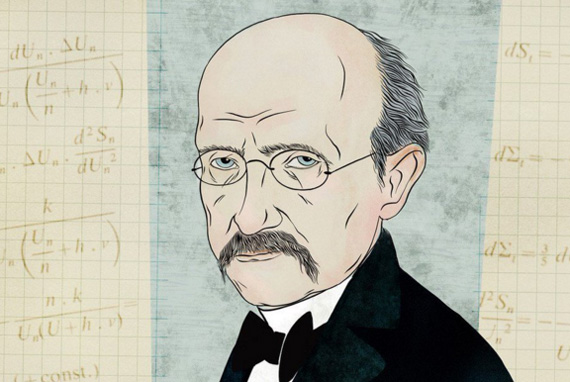
Let M be a differentiable manifold with metric gµν such that:
The metric fluctuations due to quantum effects at the spatial scale Δl and at the time scale Δt are
so they are negligible for
What are tP and lP? The first quantity is a characteristic time (Planck time), while lP=ctP is the Planck length , i.e. the distance traveled by light in time tP which in cosmology defines the cosmological horizon at Planck's time. We write the time-energy uncertainty relation in the form:
mP being the Planck mass, i.e. the mass of the universe at time tP:
mP being the Planck mass, i.e. the mass of the universe at time tP:
It follows
The Planck length
As far as seen, for stairs
quantum-gravitational effects are no longer negligible. There are other characteristic quantities which make it possible to establish a criterion concerning the possibility of neglecting the aforementioned effects. We define Compton time of a particle of mass m, the time interval within which energy conservation violations of the order of mc² are possible:
The Compton length is the distance traveled by the light in tC
These definitions extend to an extended body C of mass m, redefining the latter in Compton radius of C. Again for an extended body, we define the Schwarzschild radius:
which is the «radius» that C must have in order for
being
the gravitational energy of C. The quantum effects in the gravitational interaction between the various parts of C are negligible if tC < tS, where the latter is the Schwarzschild time:
that is, the time it takes for light to pass through the SS. It is easily obtained
Sia M una varietà differenziabile con metrica gµν tale che:
Le fluttuazioni della metrica dovute ad effetti quantistici a scala spaziale Δl e a scala temporale Δt sono:
per cui sono trascurabili per
Cosa sono tP e lP? La prima grandezza è un tempo caratteristico (tempo di Planck), mentre lP=ctP è la lunghezza di Planck, ovvero la distanza percorsa dalla luce nel tempo tP che in cosmologia definisce l'orizzonte cosmologico al tempo di Planck. Scriviamo la relazione di indeterminazione tempo-energia nella forma:
essendo mP la massa di Planck, i.e.la massa dell'universo al tempo tP:
Segue
La lunghezza di Planck
Per quanto precede, per scale
non sono più trascurabili gli effetti quanto-gravitazionali. Ci sono altre grandezze caratteristiche che permettono di stabilire un criterio riguardante la possibilità di trascurare i predetti effetti. Definiamo tempo Compton di una particella di massa m, l'intervallo di tempo entro il quale sono possibili violazioni della conservazione dell'energia dell'ordine di mc²:
La lunghezza Compton è lo spazio pecorso dalla luce in tC
Tali definizioni si estendono a un corpo esteso C di massa m, ridifinendo la seconda in raggio Compton di C. Sempre per un corpo esteso, definiamo il raggio di Schwarzschild:
che è il «raggio» che deve avere C affinchè
essendo
l'energia gravitazionale di C. Gli effetti quantistici nell'interazione gravitazionale tra le varie parti di C sono trascurabili se tC < tS, ove quest'ultimo è il tempo di Schwarzschild:
cioè il tempo impiegato dalla luce ad attraversare lS. Si ricava facilmente